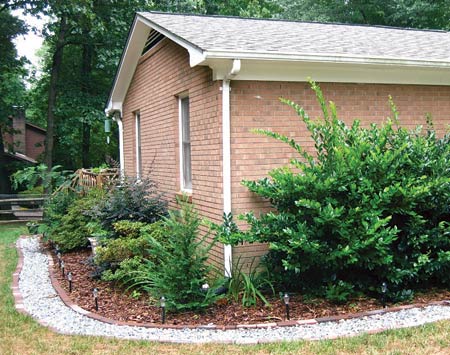Many house owners neglect about the importance of drainages until there is a problem with it. Water typically follows a path with the least resistance. The original pathways of waterflow could be constructed by our previous house improvements. Blockage could cause water accumulation or it could be diverted into unexpected areas, such as our basement, under pavement and the foundations. Therefore, we should make sure that the house has proper slopes to divert or direct water runoff. In many cases, cracked foundations and flooding basements becomes real wakeup calls for houseowners. We should address drainage problems immediately to save us headaches and a few thousands of dollars down the road.
Concrete pathways, parking lots and driveways may leave rainwater nowhere to go. As a consequence, water could pool in specific depressions causing saturations in these areas. Once the soil has reached its peak water saturation, we need to immediately create drainage to assist in removing excess water. Water-saturated soil will take quite a long time to dry out and this condition could cause nearby plants and flowers to rot. Water accumulation will also decrease nutrient supplies and encourage the growth of unsightly moss in place of the grass and plants.

When water-saturated soil is located near our basement, we should immediately check it for possible damages. We need to go inside the basement and look for areas near where the water saturation occurs. If we don’t see any sign of damage, we should touch the wall to feel whether there’s dampness in specific area. Colder and damper walls areas could be in their first stage of having water damage, even if there’s no noticeable stains and cracks. Mold could also grow easier in this area, polluting our interior with tiny spores. When the level of spores in the air increases, family members could eventually suffer from asthma and allergic reactions.
Also excess water could cause freezing damages if it is located near our house. Ice would expand and making cracks on our walls, fence and foundations. Poor drainage may also cause soil erosion and we should find ways to protect our vegetation from excessive water exposure. There are a number of drainage solutions that can help us protect lawns and our buildings. Surface drainage directly refers to pathways that water takes naturally following rain. Surface drainage could be exposed drains, surface grates, downspouts and gutters. Subsurface drainage is usually underground peps and drains that are used to remove excess water from underwater locations. Excess water could seep underground through soil saturation or drainage holes on the surface. In soil lay, water travels by capillary action. This is like paper towel, so if one side is wetter, the moisture should travel to the drier side until the level of moisture is equalized. Once saturation takes places on both sides, drains are necessary to remove any excess water. Subsurface drainage should keep plant healthy and minimize frost heaving damages to our structures.























